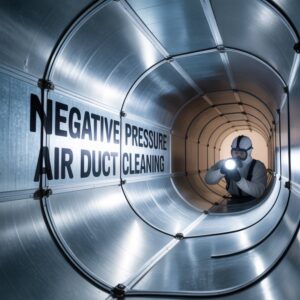
ISO 50001 Certification
You know what? When organizations talk about sustainability, they often focus on flashy things like renewable energy installations or zero-waste programs. But there’s this quieter, more behind-the-scenes hero: energy management. If your company’s serious about sustainability — and who isn’t these days? — then ISO 50001 certification deserves your attention. It’s a practical, proven way to keep energy use in check, slash costs, and boost your green creds all at once. Sounds good, right? Let me explain why.
What is ISO 50001 certification, anyway?
ISO 50001 certification might sound like a boring string of numbers and letters, but it’s really a global standard that helps organizations manage their energy use more smartly. Think of it as a fitness plan for your company’s energy habits. Just like you’d track your steps, calorie intake, and workouts to stay healthy, ISO 50001 certification sets up a system where you monitor, analyze, and improve how your organization consumes energy.
Here’s the thing: it’s not just about slashing the electric bill (though that’s a nice bonus). It’s about creating a culture where energy efficiency becomes part of everyday decision-making. It guides companies on how to continuously reduce energy waste, making sustainability less of a one-off project and more of an ongoing mindset.
Why Should You Care? The Real Benefits of ISO 50001 certification
Honestly, the first question most business leaders ask is: “Will this save us money?” And the answer is a big yes. Energy expenses can gobble up a significant chunk of your operational costs, and reducing that can improve your bottom line pretty quickly. But there’s more beneath the surface:
- Environmental Impact: Lowering energy use means fewer greenhouse gas emissions. This is a big deal when your company’s aiming to reduce its carbon footprint — and your customers, investors, or partners are watching closely.
- Reputation and Trust: Achieving ISO 50001 certification shows you’re serious about sustainability. It’s a badge of honor that can open doors, especially with clients who value green credentials.
- Internal Morale: Employees often feel better working for a company that “walks the talk.” When you involve your teams in energy-saving initiatives, you foster a sense of pride and shared purpose.
- Risk Management: Energy prices fluctuate wildly, sometimes throwing your budget into chaos. Managing energy strategically helps insulate your business from unpredictable spikes.
Sounds like a win-win, doesn’t it? But here’s a mild contradiction: you might think this sounds complicated, expensive, or like a paperwork nightmare. It’s actually much more manageable than you’d expect.
How Does ISO 50001 certification Work Without Making Your Head Spin?
At the heart of ISO 50001 certification is a cycle called Plan-Do-Check-Act (PDCA) — but don’t let that jargon scare you. Picture it this way:
- Plan: Like prepping a grocery list before cooking, you start by reviewing your current energy use. This means figuring out where and how energy is consumed, spotting the waste, and setting realistic improvement goals.
- Do: Then you put your plans into action. Maybe it’s installing more efficient lighting, fixing equipment leaks, or tweaking your processes.
- Check: Next, you keep an eye on your progress — are the changes actually saving energy? Monitoring is key here, because it tells you what’s working and what’s not.
- Act: Finally, based on your findings, you make adjustments. Maybe you try a different approach or double down on what’s effective. This cycle repeats, driving ongoing improvement.
What’s cool is that this isn’t some top-down command. ISO 50001 certification encourages involving everyone, from the CEO to the front-line staff. After all, the people who flip switches and operate machinery are often the best source of ideas on saving energy. Plus, their buy-in can make or break success.
Getting Certified: What’s the Real Journey Like?
Let’s be honest — certification processes have a reputation for being a bit dry and bureaucratic. But ISO 50001 certification doesn’t have to be a dreaded obstacle course.
Here’s what usually happens:
- Gap Analysis: You start by checking where you stand versus the ISO 50001 certification requirements. It’s like a health check — figuring out what needs fixing or improving.
- Implementation: You fill in those gaps by setting up or refining your energy management system, documenting processes, and training your team.
- Internal Audit: Before the official audit, you or an internal team run through checks to make sure everything is on track.
- Certification Audit: An independent auditor comes in to verify your compliance. If all looks good, you get the certificate.
- Continual Improvement: Certification isn’t the finish line — it’s more like a milestone. You keep improving and undergo periodic audits to maintain your status.
Of course, hurdles pop up. Maybe your leadership isn’t fully engaged, or your teams are stretched thin. Perhaps you hit unexpected costs or technical challenges. That’s normal. The trick is keeping communication open, celebrating small wins, and remembering why you’re doing this in the first place: to create a genuinely sustainable and efficient business.
Why ISO 50001 certification and Your Sustainability Goals Are a Match Made in Heaven
If you’re already chasing sustainability targets — like reducing carbon emissions, improving energy efficiency, or meeting ESG criteria — ISO 50001 certification fits snugly into that puzzle. Unlike broad, vague commitments, this certification demands concrete, measurable actions on energy.
Plus, it can integrate nicely with other management systems, like ISO 14001 (environmental management), giving you a comprehensive approach without duplicating effort. You know what? That’s a rare win in the world of sustainability, where complexity often reigns supreme.
And with the global focus on climate change intensifying, being ISO 50001 certified can even future-proof your business. Investors and regulators increasingly expect proof of sound energy management. So having this certification signals that your company is ahead of the curve — not scrambling behind it.
So, What’s the Catch?
Honestly, there isn’t a huge one. The main challenge is the commitment needed — it takes time, effort, and cultural buy-in. And sometimes, it means changing habits that have been around forever. But if your organization can rally around the cause, the payoffs are well worth it.
Imagine a company where energy waste is spotted and nipped in the bud daily; where every employee feels like a guardian of efficiency. That’s not some far-fetched dream. It’s achievable, and ISO 50001 is the roadmap.
Wrapping It Up — Is ISO 50001 certification Right for You?
If your organization cares about sustainability in a serious way — beyond the buzzwords and photo ops — ISO 50001 certification is a tool you don’t want to overlook. It’s practical, cost-effective, and globally respected. It won’t solve all your environmental challenges overnight, but it sets you on a path to real, measurable energy improvements.
You might even find that the process sparks innovation and teamwork you didn’t expect. And when energy bills go down, your stakeholders smile, and the planet gets a tiny bit healthier — well, that’s a win all around, isn’t it?
So, ready to give your company’s energy habits a much-needed tune-up? Because ISO 50001 certification might just be the partner you never knew you needed.





